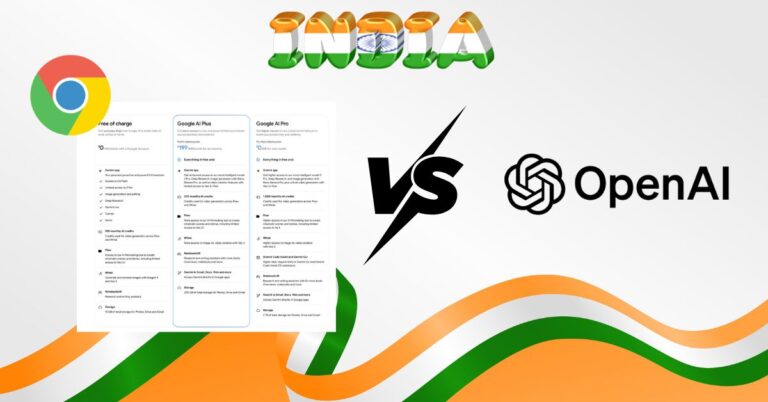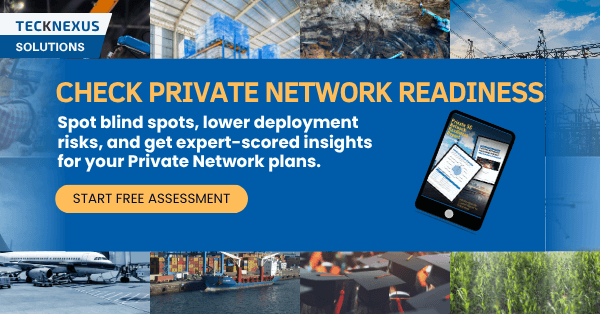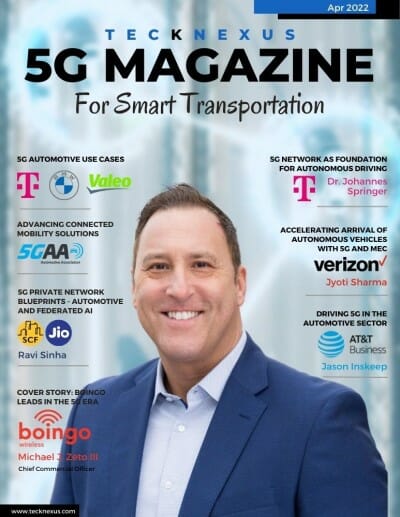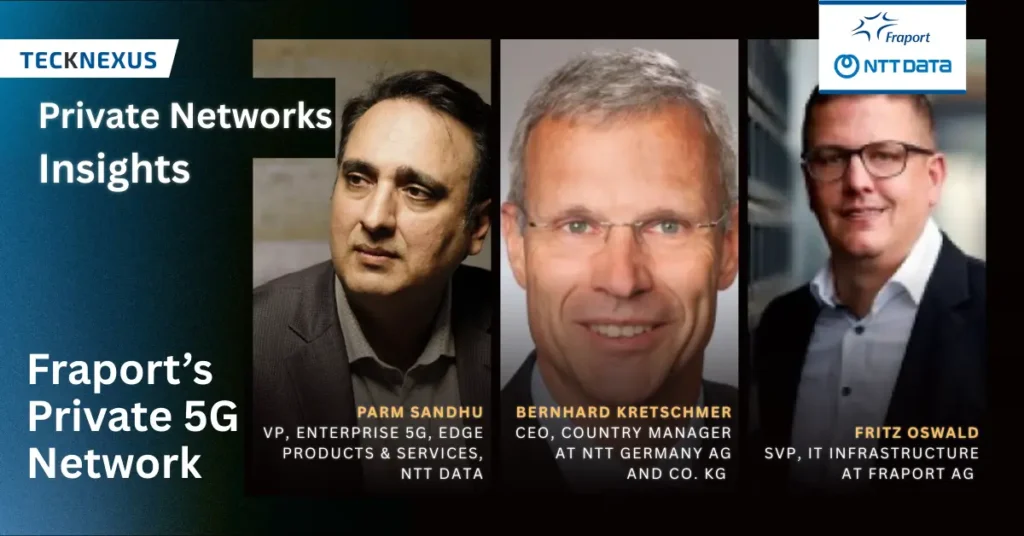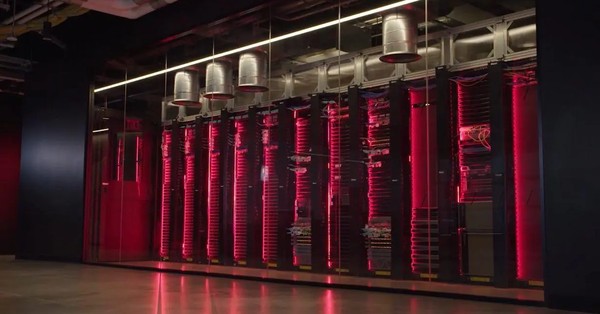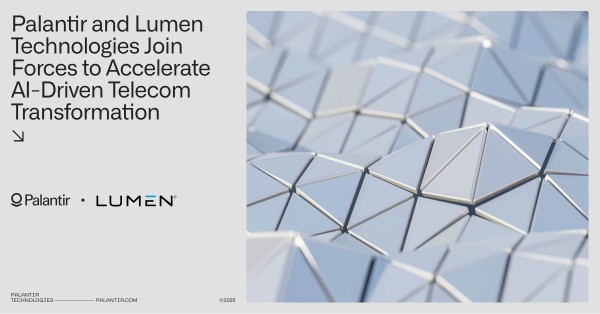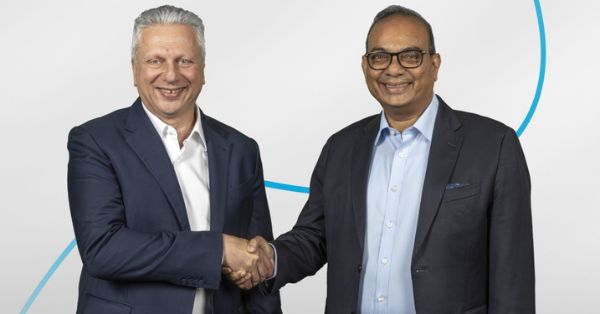Home » HealthCare
HealthCare
Executive Interviews
Essential insights and practical tools for navigating private networks. Get Details.
Available on Amazon & Google Books
Subscribe To Our Newsletter
- Tech News & Insight
- December 11, 2025
- Hema Kadia
- Tech News & Insight
- December 7, 2025
- Hema Kadia
- Tech News & Insight
- December 3, 2025
- Hema Kadia
- Tech News & Insight
- November 17, 2025
- Hema Kadia
- Tech News & Insight
- November 12, 2025
- Hema Kadia
- Tech News & Insight
- November 6, 2025
- Hema Kadia
- Usecase
- November 3, 2025
- Hema Kadia
- Tech News & Insight
- October 24, 2025
- Hema Kadia
- Tech News & Insight
- October 22, 2025
- Hema Kadia
- Tech News & Insight
- October 20, 2025
- Hema Kadia
5G IN HEALTHCARE | TRANSFORMING HEALTHCARE | FAQ
What is smart healthcare? Why do we need smart healthcare?
Smart healthcare integrates the different fragments of healthcare delivery mechanisms bringing much more coordination and ease of access to healthcare providers, their systems, patients, and the wider healthcare ecosystem. Technology enablement, faster connectivity, digitalization, and automation are changing the way patients are treated. Telehealth, remote care, and remote monitoring technology connecting patients and doctors are driving the change making healthcare “SMART.”
In today’s world, across countries and demographics, traditional healthcare is not sufficient to accommodate the health welfare needs of each citizen. The emergence of COVID-19 drew a very bleak picture where excellent health infrastructure and access to cutting-edge medical technologies and services couldn’t prevent healthcare organizations from being overwhelmed. We now see a conscious effort to shrink a tech gap, and one of the key factors accelerating it is the adoption of new-age communication technologies driven by 5G and IoT. The emergence of 5G not only helped to boost mobile connectivity but opened doors of innovation and change in the health Industry, making it smart and agile to respond to changing dynamics.
What is 5G in healthcare?
5G in healthcare refers to the integration of 5G technology into the healthcare industry to improve patient care, enable remote diagnostics, enhance telemedicine, and increase the efficiency of healthcare operations. 5G, or the fifth generation of wireless communication networks, offers faster data transmission, lower latency, and greater reliability compared to previous generations. This has a range of potential benefits for healthcare:
- Telemedicine: With 5G’s low latency and high-speed connectivity, telemedicine can become more reliable and accessible. This enables healthcare providers to offer remote consultations and diagnostics, improving access to care for people in rural or underserved areas.
- Remote diagnostics and monitoring: 5G technology can support the transmission of high-resolution medical imaging and real-time data from medical devices. This allows for remote diagnostics and continuous monitoring of patients, potentially leading to faster treatment decisions and better outcomes.
- Internet of Medical Things (IoMT): 5G can support a vast number of connected devices, forming the basis for an extensive network of medical devices and wearables. This enables real-time data collection and analysis, allowing healthcare providers to monitor patients’ conditions and offer personalized care.
- Augmented Reality (AR) and Virtual Reality (VR) in healthcare: 5G can enhance AR and VR applications in healthcare, including medical training, patient education, and therapy. These technologies can provide immersive experiences, improving learning and patient engagement.
- Remote surgery: 5G’s low latency and high bandwidth capabilities may enable surgeons to perform telesurgery or remote surgery using robotic systems controlled from a distance. This can help address the shortage of specialist surgeons in certain areas and improve access to life-saving procedures.
- AI and big data: The high-speed data transfer enabled by 5G can support the integration of AI and big data analytics in healthcare, helping providers make more informed decisions, predict health trends, and optimize resource allocation.
- Enhanced emergency response: 5G can improve communication among emergency responders, allowing for faster coordination and more effective responses to emergencies, ultimately saving lives.
Overall, 5G in healthcare has the potential to revolutionize the industry by enhancing patient care, improving access to medical services, and increasing the efficiency of healthcare operations.
What are the Top 10 5G Healthcare Use Cases and Applications
The top 10 5G in healthcare use cases and applications include:
- Remote consultations and telemedicine: 5G enables high-definition video calls and faster data transmission, making remote consultations more efficient and accessible.
- Remote surgery: 5G’s low latency allows for real-time feedback and control, making it possible for surgeons to perform complex procedures remotely using robotics.
- Augmented Reality (AR) and Virtual Reality (VR) in medical training: 5G supports high-quality streaming and real-time data processing, allowing for realistic, immersive training experiences for medical students and professionals.
- Wearables and remote monitoring: 5G supports the collection and transmission of large amounts of data from wearable devices and sensors, enabling real-time monitoring and analysis of patients’ health.
- AI and big data in healthcare: Faster data transmission and processing with 5G can help AI algorithms, and big data analytics tools make quicker, more accurate decisions for diagnosis, treatment, and research.
- Emergency response and public safety: 5G connectivity can improve communication between first responders and healthcare facilities, allowing for faster response times and better coordination during emergencies.
- Smart hospitals: IoT devices connected via 5G can help automate hospital processes, improve patient care, and optimize resource allocation.
- Drone delivery of medical supplies: 5G’s high bandwidth and low latency can enable better control and coordination of drones for delivering medical supplies to remote areas or during emergencies.
- Medical research and clinical trials: 5G can support large-scale data collection, transmission, and analysis, facilitating medical research and clinical trials.
- Precision medicine and genomics: The high-speed data transfer capabilities of 5G can help process and analyze large genomic datasets, allowing for the development of personalized treatment plans based on patients’ genetic profiles.
Sample 5G in Healthcare Global Deployments
Virgin Media O2 deploys private 5G network for NHS hospitals in the UK
Virgin Media O2 Business has switched on the UK’s first 5G-connected hospital with South London and Maudsley NHS Foundation Trust – a provider of mental health services in the United Kingdom. The switch-on is part of Maudsley Digital Lab’s series of digital health and innovation trials funded by NHS Digital, with the private 5G network providing dedicated connectivity for mission-critical digital health use cases for both clinicians and patients. The trials are investigating the efficiency, safety, and security benefits of using smart, 5G-connected technologies in NHS hospitals – including IoT (Internet of Things), AR (Augmented Reality), and AI (Artificial Intelligence). The Maudsley Smart Hospital and Maudsley Smart Pharmacy trials are now live across two wards at Bethlem Royal Hospital in South London. These include dedicated, near-real-time connectivity to power e-Observations, where clinicians use handheld devices to update patient records, saving valuable time and improving accuracy. It will also link up smart devices and remote monitoring to reduce expensive medicine waste and track the air quality inwards. In addition, hospital IT teams will have access to expert maintenance support in other hospitals thanks to Remote Expert (an AR tool), while the Trust will be able to better plan space in public areas using Spatial Insights, which uses AI to provide anonymized heat maps of crowd movement analysis using CCTV footage. Part of South London and Maudsley’s Digital Lab portfolio of digital health and innovation trials, the trial is a collaborative development between South London and Maudsley NHS Foundation Trust, NHS Digital, Virgin Media O2 Business, Bruhati, and Nokia. Read More >>
5G smart hospital to improve Thailand’s healthcare system
Thailand has launched the “Siriraj World Class 5G Smart Hospital,” billed as the region’s first and largest 5G smart hospital to improve Thailand’s healthcare system. This new digital health center in Bangkok will include several cutting-edge digital health solutions. The Hospital will be promoted to become a template for smart hospitals in Thailand and around the globe. The Siriraj hospital has been jointly unveiled by the Office of the National Broadcasting and Telecommunications Commission (NBTC), and Huawei Technologies (Thailand). It is intended to provide an efficient and convenient experience through 5G, artificial intelligence, multi-access edge computing, and a hybrid cloud system. Thailand has been working toward 5G deployment in the healthcare sector. The Thai government has announced Thailand Health Data Space 5G, a 5G-based intelligent medical information and full-service system. The goal of the 5G-based initiative is to improve the country’s healthcare system across dimensions such as hospital information transmission, diagnosis, follow-up, remote monitoring, rehabilitation, and emergency care to deliver a more efficient and pleasant visit for patients. Read More >>
SK Telecom’s 5G-powered robot for responding to coronavirus
SK Telecom and Omron Electronics Korea have jointly developed a 5G-powered autonomous robot for responding against coronavirus in a systematic and efficient way. The 5G-autonomous robot leverages technologies such as 5G, AI, autonomous driving, and IoT to carry out diverse activities such as:
- Contactless temperature screenings for visitors
- Disinfection of the building
- Scanning for people not wearing masks
- Identify locations where people are gathered to stress the importance of social distancing
Remote diagnosis of coronavirus
China Telecom, ZTE, and West China Hospital of Sichuan University conducted remote diagnosis of the coronavirus via 5G based remote video consultation. According to the on-site situation, ZTE has employed its CPE equipment to commission 5G services by means of outdoor 5G signals while constructing indoor coverage points. After the 5G network was commissioned, Sichuan health and health commission, West China Hospital, and Chengdu Public Health Clinic Center conducted remote video consultations. In accordance with the work arrangement of the Sichuan Health and Health Commission, the 5G remote consultation for telehealth will take West China Hospital of Sichuan University as the central node and be the first batch to access 27 hospitals that have accepted and treated patients. Read More >>
BT and NHS’s remote diagnosis procedure using 5G connected ambulance
British Telecom (BT) and University Hospitals Birmingham NHS Foundation Trust (UHB) demonstrated UK’s first remote diagnostic procedure using a 5G connected ambulance. This use case demonstrates how technology such as 5G, augmented reality, virtual reality, and robotics can be combined with clinical expertise to enable remote diagnostics and link field practitioners with surgeons or consultants in real-time. Wearing a specially equipped VR headset, the clinician is able to visualize exactly what the paramedic sees in the ambulance. Using a joystick, they are then able to remotely direct the paramedic in real-time to perform any necessary scans, as well as get close-up footage of the wounds and injuries of a patient. The clinician does this by speaking to the paramedic to look in a particular direction or, in the case of a scan, sends control signals over the live 5G network to a robotic or ‘haptic’ glove worn by the paramedic. The glove creates small vibrations that direct the paramedic’s hand to where the clinician wants the ultrasound sensor to be moved. This allows the clinician to remotely control the sensor position whilst seeing the images in real time. Read More >>
AT&T and Austin Cancer Center are transmitting large imaging files
AT&T and Austin Cancer Center are leveraging 5G for quickly transmitting large imaging files. MRI, CAT, or PET scans and other image machines are typically very large files and often must be sent to a specialist for review. When the network is low on bandwidth, the transmission can take a long time or not send successfully. This means the patient waits even longer for treatment, and providers can see fewer patients in the same amount of time. Adding a high-speed 5G network to existing architectures can help quickly and reliably transport huge data files of medical imagery, which can improve both access to care and the quality of care. Read More >>
AT&T and Vitas healthcare trial virtual reality for hospice patients
AT&T and VITAS® Healthcare, the nation’s leading provider of end-of-life care, have launched a study that intends to combine 5G with virtual reality and augmented reality (VR and AR) to test if it can help reduce chronic pain and anxiety for certain hospice patients. The study aims to assess a potential alternative therapy that is easier for caregivers to implement at a time and place that makes the patient most comfortable during this most difficult time. In addition, this mobile solution using immersive technology is a good use case for testing the potential for 5G speeds and low latency to help patients and families in need. The study evaluates multiple aspects, including patient feedback, VR and AR content effectiveness, and technology delivery options. The first module will focus on the effect of the content on enhancing a patient’s comfort level through the VR and AR experience. For example, to help calm an anxious patient, they might take a virtual walk through a field along a tranquil stream or even a journey to Machu Picchu in Peru. Read More >>
Remote-controlled ultrasound scan over public 5G network
British Telecom (BT), University Hospitals Birmingham NHS Foundation Trust (UHB), Medical Devices Testing and Evaluation Centre (MD-TEC), WM5G, and jointly demonstrated remote-controlled ultrasound scan over public 5G network. The demonstration simulates a paramedic in the field performing an ultrasound scan on a patient under the remote guidance of a clinician who is able to interpret the ultrasound image in real time. The ultrasound sensor is manipulated locally by the paramedic under the remote direction of the clinician. This is done using a joystick operated remotely by the clinician, which sends control signals over the live 5G network to a robotic or ‘haptic’ glove worn by the paramedic. The glove creates small vibrations that direct the paramedic’s hand to where the clinician wants the ultrasound sensor to be moved. This allows the clinician to remotely control the sensor position whilst seeing the ultrasound images in real-time.
In addition, there is a camera in the ambulance which transmits in high definition a view of the inside of the ambulance covering the patient and paramedic to a second screen located on the clinician’s workstation. The images are relayed over a high-bandwidth 5G connection, so the clinician is able to view both the ultrasound examination performed by the paramedic and keep an eye on the overall scene inside the ambulance. The superfast speeds of 5G ensure sharper and more reliable imagery for the clinician than could previously be achieved. Read More >>
Telefonica O2 and Samsung trials 5G smart ambulance for remote consultation
Telefonica O2 partnered with Samsung, Visionable, and Launchcloud for the trial of 5G smart ambulance use case enabling remote consultation. This project equips standard ambulances with state-of-the-art devices and connectivity, creating a “Smart Ambulance” that simulates 5G connectivity, transforming the vehicle into a unique remote consultation room. This enables paramedics to conduct onboard treatments through mobile expert consultation. It can empower paramedics to treat more people with more ailments than currently possible and ease the strain on hospital resources by reducing the number of patients taken to the hospital. The trial simulates an emergency call-out, allowing paramedics to conduct checks, collect data, and communicate with consultants remotely using onboard equipment. The paramedics are able to diagnose patients and recommend the appropriate treatment and next actions. Read More >>
Ooredoo Qatar and Ericsson trials 5G connected ambulance for remote patient assessment
Ooredoo Qatar, partnered with Ericsson and demonstrated remote patient assessment and ultrasound procedure inside a 5G connected ambulance using a special haptic glove controlled by a doctor remotely using a specially designed joystick. This use case provided a glimpse into how doctors could provide remote assistance to treat patients in movable vehicles. Paramedics will continue to use ambulances to attend medical emergencies as they do now, but – with the new technology in the 5G-connected ambulance – they will then be able to assess the patient using a special haptic glove that is controlled by the doctor remotely using a specially designed joystick. Ooredoo’s 5G networks will enable information gathered to be sent to the doctor, wherever they are, so they can then offer diagnosis and treatment advice without the patient ever coming into physical contact with the doctor. Read More >>
Inquire about our “5G for Healthcare” research report for additional industry use cases.
What are the 5G characteristics enabling smart healthcare?
5G technology offers several key characteristics that enable smart healthcare, creating a connected and efficient healthcare ecosystem:
- Enhanced Mobile Broadband (eMBB): 5G provides significantly faster data speeds compared to previous generations, enabling the transmission of high-resolution medical images, video streaming, and other data-intensive applications. This facilitates better remote consultations, telemedicine, and improved access to healthcare services.
- Ultra-Reliable Low Latency Communication (URLLC): 5G networks offer extremely low latency, or the time it takes for data to travel from one point to another. This is crucial for applications such as remote surgery, where real-time communication between surgeons and robotic systems is essential. Low latency also improves the quality of telemedicine and enables real-time remote monitoring of patients.
- Massive Machine-Type Communication (mMTC): 5G can support a large number of connected devices, making it ideal for the Internet of Medical Things (IoMT). This allows for the seamless integration of various medical devices, wearables, and sensors, facilitating real-time data collection, monitoring, and analysis for better patient care and personalized treatment plans.
- Network Slicing: 5G networks can be divided into multiple virtual networks or “slices,” each with its own performance characteristics, such as bandwidth, latency, and security. This enables healthcare providers to have dedicated network slices for specific applications or services, ensuring optimal performance and prioritizing critical healthcare functions.
- Enhanced Security: 5G networks are designed with improved security features to protect sensitive patient data and ensure the privacy and confidentiality of healthcare information. This is essential for maintaining trust and compliance with healthcare regulations like HIPAA (Health Insurance Portability and Accountability Act).
- Edge Computing: 5G enables edge computing, which refers to processing and analyzing data closer to its source rather than relying on centralized data centers. This can reduce latency, enhance data privacy, and enable real-time decision-making in healthcare applications like remote monitoring and diagnostics.
- Scalability and Flexibility: 5G networks are designed to be easily scalable and flexible, allowing healthcare providers to adapt their services as needed. This can help accommodate the growing demand for healthcare services and support new applications and technologies as they emerge.
By offering these characteristics, 5G enables smart healthcare solutions that can improve patient care, increase access to healthcare services, and optimize healthcare operations.
Who are 5G in healthcare ecosystem players?
The 5G healthcare ecosystem involves a diverse range of players from various industries, each contributing to the development, deployment, and integration of 5G technology in healthcare settings. Some key players include:
- Telecommunications companies: Major telecom companies, such as AT&T, Verizon, T-Mobile, and Vodafone, are responsible for building and deploying 5G networks and infrastructure. They play a crucial role in ensuring the availability and reliability of 5G services for healthcare applications.
- Network equipment manufacturers: Companies like Ericsson, Nokia, Huawei, and Cisco develop and manufacture the hardware and equipment required for 5G networks, such as antennas, base stations, routers, and switches.
- Device manufacturers: Medical device manufacturers, such as Philips, GE Healthcare, and Medtronic, as well as consumer electronics companies like Apple, Samsung, and Fitbit, produce 5G-enabled devices, wearables, and sensors for healthcare applications.
- Healthcare providers: Hospitals, clinics, and other healthcare facilities adopt and integrate 5G technology into their operations to offer improved patient care, telemedicine services, remote monitoring, and other applications.
- Software and application developers: Companies specializing in software developers create applications, platforms, and solutions that leverage 5G capabilities for healthcare use cases, such as telemedicine, remote diagnostics, and patient monitoring.
- Cloud service providers: Companies like Amazon Web Services (AWS), Microsoft Azure, and Google Cloud provide cloud-based infrastructure, platforms, and services that support 5G-enabled healthcare applications and data storage.
- Cybersecurity firms: As 5G technology introduces new security challenges, cybersecurity firms play an essential role in protecting sensitive patient data and ensuring the privacy and security of healthcare networks and systems.
- Research institutions and academia: Universities and research institutions contribute to the development and evaluation of 5G technology, exploring new use cases, innovations, and best practices for its application in healthcare.
- Government agencies and regulators: Government agencies, such as the Federal Communications Commission (FCC) in the United States or the European Commission in the European Union, are responsible for setting policies, regulations, and guidelines related to 5G deployment and use in healthcare, ensuring patient safety, privacy, and data security.
- Standards organizations: Groups like the International Telecommunication Union (ITU) and the 3rd Generation Partnership Project (3GPP) develop technical standards and specifications for 5G technology, ensuring interoperability and compatibility across devices, networks, and services.
These players collaborate, innovate, and contribute to the development and integration of 5G technology in healthcare, enabling a more connected, efficient, and patient-centric healthcare ecosystem.
What are the adoption challenges of 5G in the healthcare industry?
With the above-mentioned broader landscape for ecosystem players, the care model is evolving and bringing about additional challenges or “opportunities” for the adoption of 5G in health care. Thus, bringing together new parts of businesses, consortiums, and working groups to convene on global naming conventions and best practices for evaluation methods. The expanded list of stakeholders is faced with building the needed infrastructure, security, and governance relative to the complexities of healthcare and PHI. Some of the related challenges associated with smart healthcare systems include:
- Privacy standards and data security – historical health records contain very sensitive personal information. 5G wireless technology must ensure strict privacy standards in the healthcare industry, e.g., HIPAA
- Security concerns – ensuring end-to-end security of data across mobile, IoT devices & network
- 5G compatible devices – availability of 5G compatible devices supporting current healthcare applications
- 5G network coverage – although 5G has been rolled out for a few years now, it is not widely available across remote and rural areas in developed countries and is still in the process of rolling out in developing countries
- Healthcare organization technology upgrade – infrastructure, applications, and devices need to be upgraded for 5G
- Data Accuracy – healthcare providers, will rely on the data shared by the devices. The accuracy of data plays a very important role in proper diagnosis since incorrect or unauthenticated data can impact the treatment.
- Interoperability of data – data can be stored in different formats across different devices. For proper processing of the data, it is highly imperative that some standardization of data is maintained across different formats.
Also, there is the need to answer the obvious question of Who pays for what? When it comes to building the infrastructure in remote areas for rural access costs.
TeckNexus Newsletters
I acknowledge and agree to receive TeckNexus communications in line with the T&C and privacy policy.
Whitepaper

Whitepaper

Whitepaper

Check Private Network Readiness

250 questions based assessment and insights
$750
65+ questions based assessment and insights
$500
160 questions based assessment and insights
$500
75+ questions based assessment and insights
Coming Soon
75+ questions based assessment and insights
Coming Soon* Prices does not include tax
Brand Connect
Amplify Your Brand & Boost Your Business
- Thought-Leadership Management
- Magazine Article
- Executive Interviews
- Whitepapers
- Research Reports
- Custom Research
- Blog Series
- Webinars
- Podcasts
- Advertorials
- Display Ads
- Event Partnership



